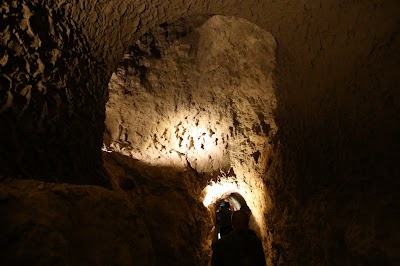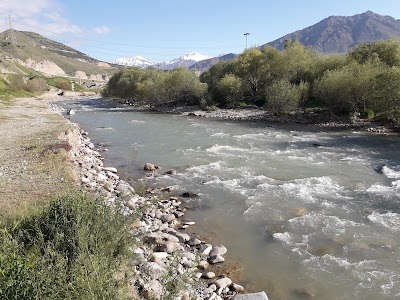Gonabad Qanat (قنات گناباد)
Related Places
Overview
Gonabad Qanat: A Marvel of Ancient Engineering
Nestled in the arid landscapes of North Khorasan province in Iran, the Gonabad Qanat stands as a testament to the ingenuity of ancient Persian engineering. This remarkable underground aqueduct, known as a qanat, dates back over 2,500 years and is one of the oldest and most significant water management systems in the world. Travelers visiting the Gonabad Qanat will be captivated not only by its historical importance but also by its architectural beauty and the vital role it plays in the region's ecology and economy.
The Gonabad Qanat extends approximately 33 kilometers (about 20.5 miles) and descends several hundred meters underground, showcasing an intricate network of tunnels and shafts that were constructed to transport water from underground aquifers to the surface. This innovative system allows water to flow naturally, relying on gravity to navigate through its gently sloping channels. For visitors, walking through the qanat is not just an exploration of engineering brilliance; it is also an immersion into the history of a civilization that thrived in a harsh environment.
As you venture into the qanat, you will encounter cool, refreshing air that contrasts sharply with the scorching sun outside. The walls are lined with time-worn stones, and the gentle sound of water trickling in the background creates a serene atmosphere. Along the way, you may notice small openings that serve as ventilation shafts, providing glimpses of the outside world while also allowing the qanat to maintain airflow and prevent stagnation. This unique architectural feature is not just functional but also adds to the aesthetic charm of the structure.
A Cultural and Historical Significance
The importance of the Gonabad Qanat transcends its practical use. It has been recognized as a UNESCO World Heritage Site, highlighting its cultural and historical significance. The qanat system has played a crucial role in supporting agriculture in the region, allowing farmers to cultivate crops in an otherwise inhospitable environment. The surrounding area flourishes with date palms, fruits, and vegetables, all made possible by the life-giving water supplied by the qanat.
Visiting the Gonabad Qanat also provides an opportunity to engage with local culture. The nearby town of Gonabad is known for its traditional crafts and hospitality. Travelers can explore the vibrant bazaars, where artisans sell handmade goods, or savor local delicacies at charming eateries. The community’s connection to the qanat is palpable, as locals take pride in preserving this ancient system that has sustained their livelihoods for generations.
Practical Tips for Visitors
When planning your visit to the Gonabad Qanat, it is advisable to wear comfortable footwear, as the terrain can be uneven, and the underground passages may require some bending and maneuvering. The best time to visit is during the spring and autumn months when the weather is milder. Guided tours are available, providing insightful information about the qanat’s history and construction, which can greatly enhance your experience.
In conclusion, the Gonabad Qanat is more than just a remarkable feat of engineering; it is a living monument to the resilience and resourcefulness of the Iranian people. For travelers seeking to delve into the rich history and culture of Iran, a visit to the Gonabad Qanat offers a unique and unforgettable experience that captures the essence of an ancient civilization still thriving in the modern world.




